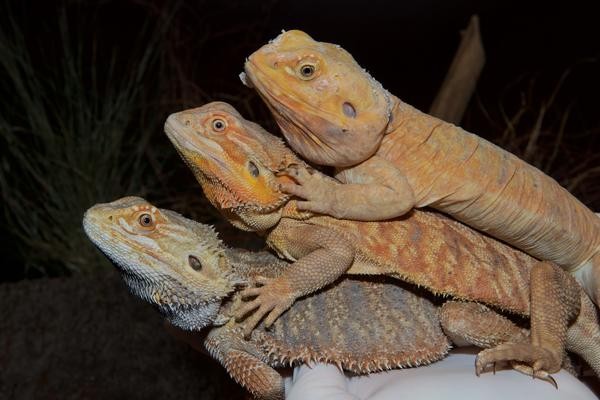Why do animals have different fur, scales, and feathers? They all provide protection and camouflage for even if they possess different sizes, texture and color. In this new study, their origins are traced to a single, common ancestor providing more clues about the evolutionary links between mammals, reptiles and birds.
In this new study led by Michel Milinkovitch of the University of Geneva, a team of researchers examined and studied a naked bearded dragon that does not possess any scales, also lacking its distinct spiked neck frill. The team deciphered what are the causes of this fluke in the naked bearded dragon by studying its DNA.
Their findings revealed that a mutated gene affected the non-existent scales of the naked bearded dragon, which is also the same gene that is responsible for feather and fur development in animals. Milinkovitch says, even if these skin appendages appear very differently for every animal species, they all begin with this single gene. They are all inherited from a common structure that became massively diverse, he adds.
In the early embryo development, furs in mammals and feathers in birds apparently appear very similar, as researchers explain that they develop from a basic structure known as placode, which stems from a thick accumulation of skin cells.
This morphology that is based on a common placode is suggesting how furs and feathers all have a common evolutionary link. Apart from this, mammals and birds also evolved from a shared ancestor from 320 million years ago even if birds and reptiles have more in common with each other than mammals with birds.
In this new study, researchers show how reptilian scales develop differently from mammals and birds where they investigated reptile embryos and found out that there were no evidence of similar placodes. Milinkovitch suggests that the disappearance of these placodes in reptiles may be lost from multiple lineages of reptiles and it is also possible that mammals and birds have developed these placodes separately however, this theory is least likely to occur since an exact gene known as EDA, control placode development both in birds and mammals.
According to Nicolas Di-Poï of the same team, the genome that was responsible for the scale mutation of the naked bearded dragon is also the exact gene that produces EDA that is also found in birds and mammals.
Milinkovitch says that the placodes in the naked bearded dragon were present but they appeared differently from the typical placode that scientists observe in birds and mammals. He adds, they differ extremely in morphology but a homology still exists.
This new study is published in the journal Science Advances.



























